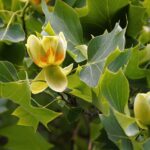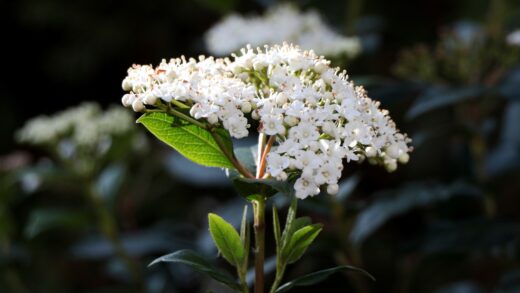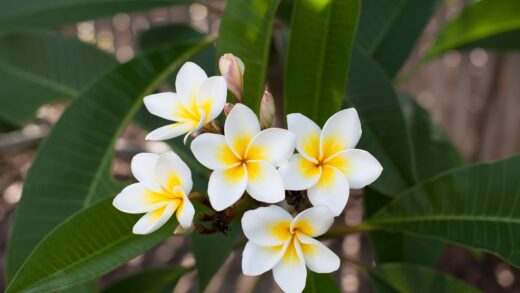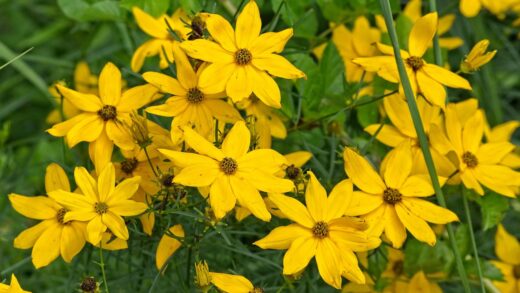The Glaucous Cotoneaster, scientifically known as Cotoneaster glaucophyllus, is an extremely popular and versatile evergreen or semi-evergreen shrub native to Southern China and the Himalayas. It is a favored ornamental plant in gardens and public spaces due to its distinctive glaucous-green leaves, small white flowers in spring, and bright red berries in autumn. However, for the plant to display its best form year after year, professional winter preparation is essential to ensure it survives the cold months without damage. By applying the correct overwintering techniques, we not only guarantee the plant’s survival but also lay the foundation for abundant flowering and fruiting in the following season.
The Glaucous Cotoneaster generally possesses good frost tolerance, partly due to its place of origin where it had to adapt to cold winters. It is reliably hardy in most temperate climate zones, but young, freshly planted specimens, as well as shrubs planted in extremely cold or windy locations, are more exposed to winter damage. The plant’s evergreen or semi-evergreen nature depends on the severity of the winter; in milder winters, it retains most of its leaves, while in harsher conditions, it may shed more to reduce water loss. It is important to understand that hardiness is not just a single temperature value but a complex interplay of several factors.
The plant’s winter hardiness is significantly influenced by its planting location and soil quality. The most ideal condition for it is well-drained soil, as standing water in winter can cause root rot, which can be fatal to the plant. Additionally, a location sheltered from harsh, dry winter winds is crucial for protecting the foliage, as wind increases transpiration and can cause a condition known as desiccation or winter burn. The overall condition of the plant is also decisive; a healthy, well-nourished cotoneaster free of diseases will be much more resistant to winter stress.
Although the Glaucous Cotoneaster is a resilient species, deliberate winter preparation is essential for long-term success and maximizing its ornamental value. The goal of overwintering is not just to keep the plant alive, but to prevent winter damage such as branch breakage, frost cracks, or leaf scorch. Proactive care ensures that the shrub starts growing in the spring full of energy and health, rather than having to focus on recovering from injuries sustained during the winter. The steps detailed below collectively form the strategy for successful overwintering.
Autumn preparation for successful overwintering
One of the most important tasks in the autumn is to ensure adequate water supply before the ground freezes. Evergreen and semi-evergreen plants, like the Glaucous Cotoneaster, continue to transpire through their leaves in winter, while they cannot absorb water from the frozen ground. To prevent this, perform deep, thorough watering on frost-free days in late autumn to fully saturate the root zone with moisture. This water reserve helps the plant survive periods when water uptake is limited, thus reducing the risk of winter desiccation, also known as freeze-drying.
More articles on this topic
The timing and type of nutrient supply are also critical during autumn preparation. The use of high-nitrogen fertilizers should be avoided from late summer onwards, as they stimulate new, tender growth that does not mature before the frosts and is easily damaged. Instead, apply a low-nitrogen, high-potassium (K) fertilizer in early autumn. Potassium promotes the strengthening of cell walls and the hardening of shoots, which significantly increases the plant’s frost tolerance and overall resistance to winter adversities.
Autumn pruning should be done with caution, as vigorous cutting late in the season can also encourage late growth. Major shaping or thinning pruning should be left until late winter or early spring. In autumn, only remove diseased, damaged, or dead branches, as these parts can be entry points for pathogens. This sanitary pruning helps prevent the overwintering and spread of diseases on the plant.
Protecting the root zone is perhaps the most important physical intervention we can do for the plant. Before the ground freezes, but after the first frosts, spread a 5-10 cm thick layer of organic mulch (such as pine bark, compost, or leaves) around the base of the shrub. This protective layer insulates the soil, protects the roots from sudden temperature fluctuations, helps retain soil moisture, and prevents winter weeds from proliferating. Ensure that the mulch does not directly touch the plant’s stem to prevent rot.
Protective methods against winter damage
For young, newly planted, or exposed Glaucous Cotoneaster shrubs, physical protection against the winter elements may be necessary. The most common damage is caused by the combined effect of freezing, drying winds and strong winter sun, which leads to leaf scorch. To prevent this, you can build a simple windbreak on the side of the shrub facing the prevailing wind, for example, using burlap or reed screening attached to stakes. This barrier breaks the force of the wind and also provides shade, reducing the stress on the plant.
More articles on this topic
Another effective method is to wrap the plant, especially in areas where heavy snow or freezing rain threatens the integrity of the branches. Use a breathable material for covering, such as burlap, frost cloth, or a special winter plant cover. It is important that the covering material does not directly touch the foliage, so it is advisable to place a few stakes around the shrub and stretch the material over them to form a tent. This method prevents condensation and the development of fungal diseases under the cover.
During the winter, rodents like voles and mice, as well as larger animals like rabbits and deer, can cause serious damage to garden plants. Rodents are fond of girdling the lower part of the shrub’s trunk under the snow cover, which can lead to the plant’s death. To prevent this, place a wire mesh or plastic trunk guard around the base of the shrub. To protect against rabbits and deer, you can use wildlife repellents or a taller fence, or wrap the entire shrub.
Snow plays a dual role in overwintering plants: powder snow is an excellent insulator that protects the root system and lower branches from hard frosts. However, heavy, wet snow can be a significant burden on the branches, leading to deformation or breakage. If a large amount of heavy snow falls, gently shake it off the branches with a soft broom, using upward strokes to avoid snapping them. Never try to break off ice that has frozen onto the plant, as this will almost certainly cause more harm; wait for it to melt naturally.
Spring tasks and assessing winter damage
When spring arrives and temperatures consistently rise above freezing, and the danger of hard night frosts has passed, you can begin to remove the winter protection. This process should be done gradually to allow the plant time to acclimate to the changed conditions, such as stronger sunlight and direct air movement. First, remove the covering materials like burlap, and a few days later, remove the trunk guards and pull the thicker layer of mulch slightly away from the base. Uncovering too early can damage the plant due to late frosts.
After removing the winter protection, the critical step of assessing winter damage follows. Thoroughly inspect the shrub for branches broken by snow or ice, shoots that are browned and brittle showing signs of frostbite, and frost damage (leaf scorch) on the foliage. If you are unsure about the condition of a branch, perform a “scratch test”: gently scrape a small piece of bark with a sharp knife or your fingernail. If the tissue underneath the bark is green and moist, the branch is alive; if it is brown and dry, it is dead.
Spring pruning should be carried out when the plant is clearly showing signs of growth and the damaged parts are easily distinguishable from the healthy ones. Cut off all dead, diseased, or winter-damaged branches back to a healthy part, just above a live bud or fork. This cleanup pruning is not only aesthetically important but also encourages the plant to direct its energy towards developing new, vigorous shoots. Using clean, sharp pruning shears is essential for quick wound healing.
After pruning, help the plant’s regeneration and spring growth by applying a balanced, slow-release fertilizer to the root zone. This replenishes the nutrients depleted during the winter and gives a boost to new shoots and leaves. During dry periods in spring, do not forget to water regularly to help the plant recover quickly from winter stress. These final steps will ensure that the Glaucous Cotoneaster starts the new growing season healthy and strong, remaining a beautiful feature in your garden all year round.


















